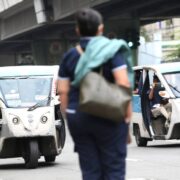Right path to food security

What critical policy reforms must government pursue to achieve food security in the country?” was the question posed in a recent forum on food security. With so many opinions and recommendations flying about, I’m worried that we are hearing muddled and conflicting pronouncements from government that will not lead us anywhere closer to the food security everyone is talking about when what it means may not even be clear to most. We should thus clarify definitions at the outset.
Perhaps a good way to start is to define food insecurity, which we have grappled with for decades. It’s best seen in the high incidence of hunger, which the Social Weather Stations reports to have averaged 15.6 percent in the past 20 years, and peaked at 30.7 percent (nearly one in every three Filipinos) in September 2020, at the pandemic’s peak. It since moved down and bottomed out last year in March and September at 9.8 percent. But disturbingly, it has been rising again, to 12.6 percent in December, and on to 14.2 in March. This is the highest in three years since hitting 16.8 percent in May 2021 and is clearly linked to high food prices. Indeed, food inflation also speeded up since the year started with 3.5 percent, speeding up to 4.6, 5.6, and 6.0 percent in the following months. Hunger traces to the difficulty of access to food due mainly to high prices. In turn, our much higher food prices vs our neighbors reflect domestic supply shortfalls and high import tariffs that magnify already elevated world food prices.
The UN Food and Agriculture Organization (FAO) formally defines food security as “when all people, at all times, have physical and economic access to sufficient, safe, and nutritious food that meets their dietary needs and food preferences for an active and healthy life.” Keywords are physical and economic access, meaning food is both available and affordable. FAO defines availability to mean that supplies of food produced domestically or imported meet the population’s needs; affordability means prices are within reach with people’s incomes. It’s the latter that many ardent advocates for food self-sufficiency miss when they argue for as much domestic production as possible, even if it means producing it at high cost under most unsuitable conditions.
As I’ve written before, it’s not just production but productivity that counts. We must help farmers through lower costs, not higher prices, and produce food, especially our staple rice, at a cost that permits matching import prices. Many actually can. Failing this means penalizing all consumers in favor of high-cost farmers that they far outnumber, and who must be targeted with help without the collateral damage of high prices for all—including outright cash assistance if need be. In the end, the greatest good for the greatest number must be upheld in policy and in practice. It also allocates our resources to their best use to maximize the nation’s wealth for the widest benefit. Our farms and farmers must be helped to match their foreign counterparts’ costs with public goods like irrigation, farm-to-market roads, mechanization, postharvest facilities including cold storage systems, and efficient logistics to lower the cost of moving commodities from farms to end-users. Imports need not be feared or blocked if our producers can stand up to them.
Economists have long held this to be the goal of agricultural policy, hence opposing trade controls in favor of more open trade with calibrated protection (like using variable tariffs). It’s not because they love imports, but because they want the discipline of the market to push government to help the farmers in the most meaningful and sustainable way that will truly uplift their lives. Trade critics who brand economists as “import lovers” and “farmer haters”—with Socioeconomic Planning Secretary Arsenio Balisacan, son of a tenant farmer, as pet punching bag—are being most cruel and unfair. I know he only has the greatest good for the greatest number in mind, which he is sworn to uphold in his job. I once held the same job and solemn responsibility (my grandfather was a rice farmer, too), and still get unfairly bashed as well.
So what policy reforms do we need, to finally gain food security? Topmost is a policy of farm consolidation, ideally through cooperatives that outsource expert management. But it’s also time to rethink land ownership ceilings that keep our farming sector fragmented and costly, and our farmers poor. These ceilings must be eased for agribusiness investors to make investment in food attractive, rather than risky and repulsive the way it became after agrarian reform forced commercial-scale farms to split up. We can quickly reinvigorate agriculture with this one policy reform.
But the bigger part of the need is not policy, but governance reform. On this, I have already written much and will not repeat myself here.

















